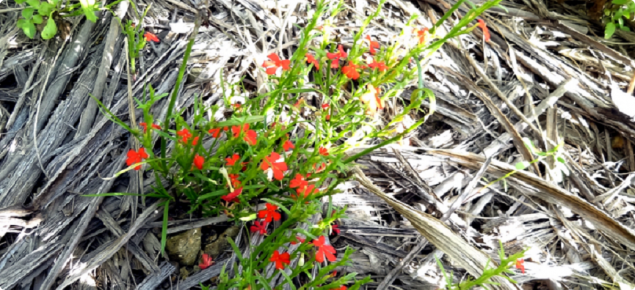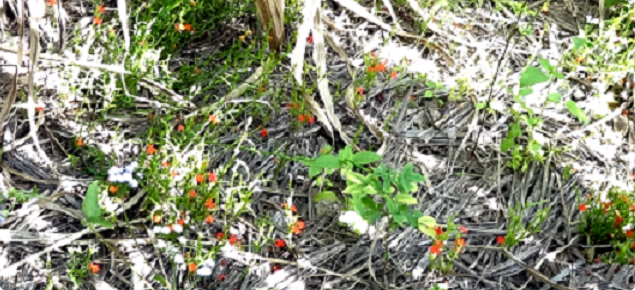Introduction
Red witchweed (Striga asiatica) is a parasitic weed which can only grow if attached to the roots of a suitable host plant. Red witchweed obtains its water and nutrients from its host, suppressing or even killing it.
Red witchweed affects economically important crops such as sorghum, corn (maize), rice and sugar cane which belong to the grass family, Poaceae. It can also attach to many common grass weeds. Red witchweed does not parasitise broadleaf plants.
In 2013, red witchweed was found on sugarcane farms in the Mackay area of Queensland. The Queensland government has an eradication program in place.
Why red witchweed matters
As a major parasite of important crops causing substantial production losses, many countries ban red witchweed as a quarantine pest. If red witchweed became established in Australia, it could affect exports of grains.
What to look for
Red witchweed grows to approximately 10-40cm tall. Its underground stems are cylindrical and white. The above-ground stems are four-sided and covered with rough white hairs. Plants 5cm tall have been found in herbicide treated areas with one flower.
Its leaves are arranged in opposite pairs along the stem: 6-40mm long, 1-4mm wide, have a tapered, pointed tip, and green with a rough surface. The flowers are 5–20mm in diameter and are usually red, but can be white, yellow or pink. The plants found in Queensland have red flowers.
Red witchweed is likely to be found around the perimeter of crops (headlands), or, as well as on weedy grasses and grass pastures. It prefers free-draining sandy or gravelly soils
Host plant symptoms
The host plant symptoms caused by witchweed can be confused with drought damage, nutrient deficiency or vascular disease.
Life history of red witchweed
Red witchweed reproduces from seeds. Its seeds are triggered to germinate by a particular regime of soil temperatures combined with the presence of a substance produced by the roots of host plants.
After attaching to a host plant, red witchweed can grow underground for up to eight weeks before emerging and starting to flower.
A single red witchweed plant can produce up to 200 000 tiny dust-like seeds. The seeds are dispersed by wind, water, soil movement or human activities, or by adhering to the feet, fur or feathers of animals.
What you can do about red witchweed
Always be aware of any new or unusual plants or weeds, even if they look harmless. Look for red witchweed especially in the perimeter of host crop or on grass weeds.
Hosts of red witchweed include economically important grasses and summer cereals such as sorghum, corn (maize), rice and sugar cane.
It can also be found growing on a wide range of tropical grasses common in agricultural headlands and pastures.
Red witchweed is most likely to be found in the north of WA. Producers in the Kimberley and Pilbara should be especially vigilant.
Do not attempt to remove any flowering plants, as this may spread the tiny, dust-like seeds. Take photos of the infestation and take a GPS reading or mark the site in some way so it can be found again.
Avoid moving any soil, machinery or products (including mulch) that might contain spread seed-contaminated soil off-site.
Further information
If you think you have found red witchweed please call the Pest and Disease Information Service.
For further information on witchweed, look at the following webpages:
- Witchweed: declared pest: for damage done, reporting and requirements
- Witchweed control: for control


